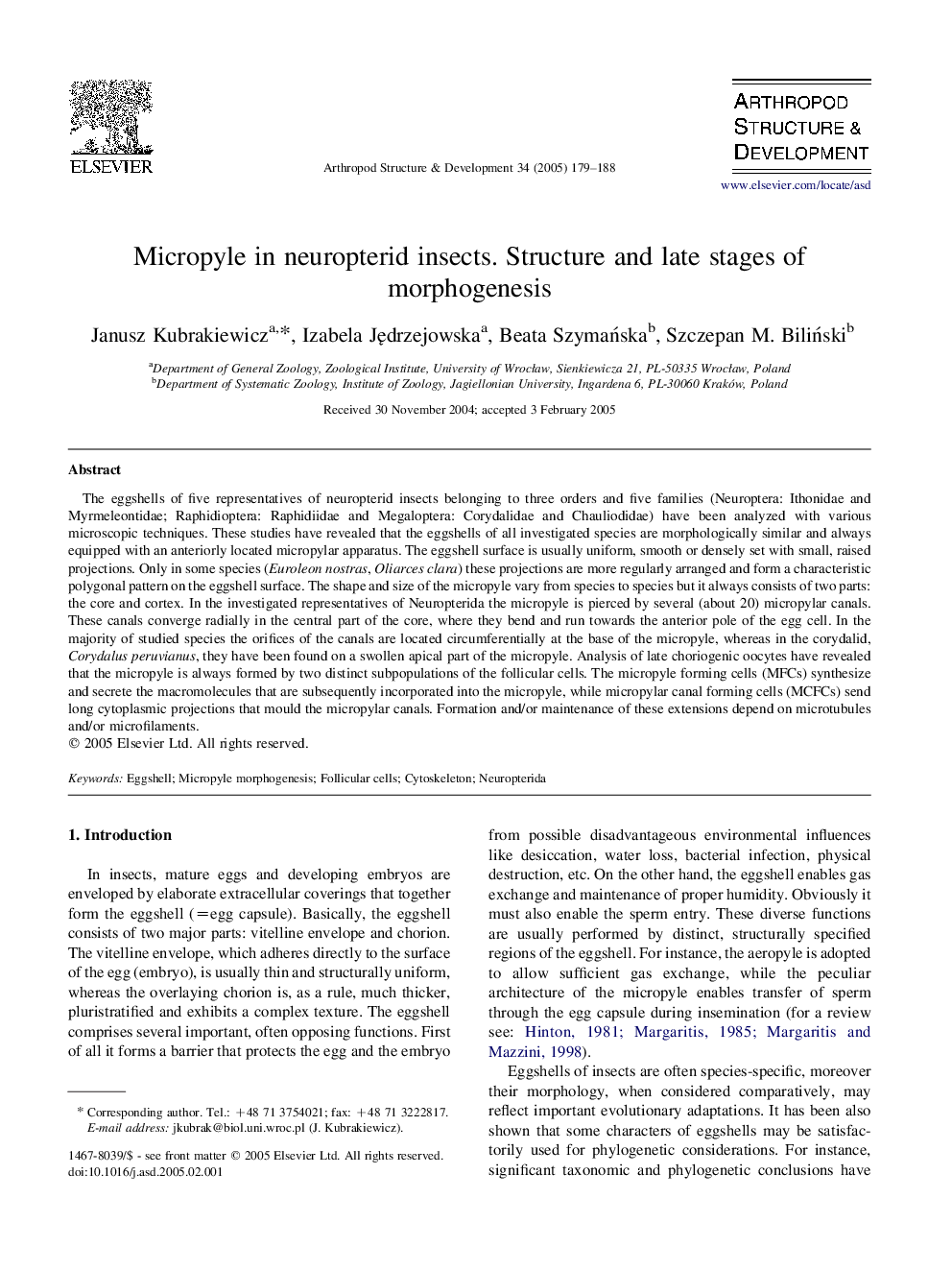| Article ID | Journal | Published Year | Pages | File Type |
|---|---|---|---|---|
| 9104169 | Arthropod Structure & Development | 2005 | 10 Pages |
Abstract
The eggshells of five representatives of neuropterid insects belonging to three orders and five families (Neuroptera: Ithonidae and Myrmeleontidae; Raphidioptera: Raphidiidae and Megaloptera: Corydalidae and Chauliodidae) have been analyzed with various microscopic techniques. These studies have revealed that the eggshells of all investigated species are morphologically similar and always equipped with an anteriorly located micropylar apparatus. The eggshell surface is usually uniform, smooth or densely set with small, raised projections. Only in some species (Euroleon nostras, Oliarces clara) these projections are more regularly arranged and form a characteristic polygonal pattern on the eggshell surface. The shape and size of the micropyle vary from species to species but it always consists of two parts: the core and cortex. In the investigated representatives of Neuropterida the micropyle is pierced by several (about 20) micropylar canals. These canals converge radially in the central part of the core, where they bend and run towards the anterior pole of the egg cell. In the majority of studied species the orifices of the canals are located circumferentially at the base of the micropyle, whereas in the corydalid, Corydalus peruvianus, they have been found on a swollen apical part of the micropyle. Analysis of late choriogenic oocytes have revealed that the micropyle is always formed by two distinct subpopulations of the follicular cells. The micropyle forming cells (MFCs) synthesize and secrete the macromolecules that are subsequently incorporated into the micropyle, while micropylar canal forming cells (MCFCs) send long cytoplasmic projections that mould the micropylar canals. Formation and/or maintenance of these extensions depend on microtubules and/or microfilaments.
Related Topics
Life Sciences
Agricultural and Biological Sciences
Insect Science
Authors
Janusz Kubrakiewicz, Izabela JÄdrzejowska, Beata SzymaÅska, Szczepan M. BiliÅski,
